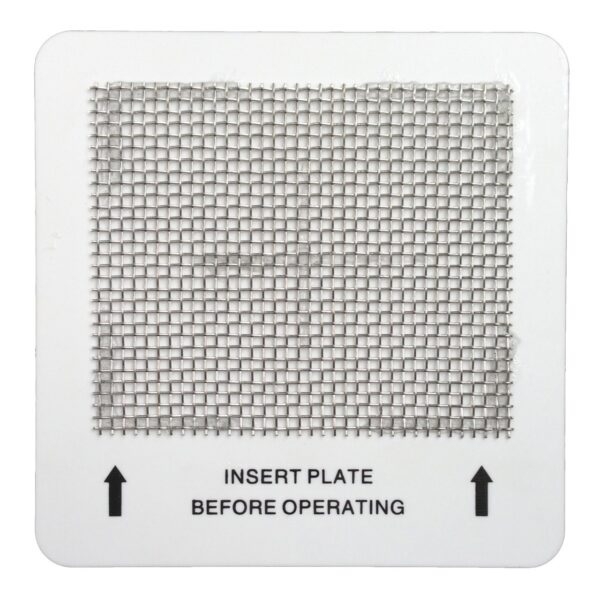Replacing the ozone plate in a fresh air box is a straightforward task, but it requires attention to detail and proper handling to ensure the device continues to function effectively. Ozone plates are a crucial component of air purifiers that use ozone to eliminate odors and contaminants from the air. Over time, these plates can become dirty or worn out, reducing the effectiveness of the air purifier. Here is a comprehensive guide on how to replace the ozone plate in a fresh air box.
Safety First
Before starting the replacement process, ensure that the air purifier is turned off and unplugged. This is essential to prevent any risk of electrical shock or damage to the unit. Additionally, it is advisable to wear gloves to protect your hands from any sharp edges and to prevent oils and dirt from your skin from contaminating the new ozone plate for Fresh Air Box.
Locate the Ozone Plate
The ozone plate is typically housed within the main body of the air purifier, often behind a cover or panel. Consult the user manual of your specific model to find the exact location of the ozone plate. If you no longer have the manual, a quick search online with the model number should yield useful diagrams or instructions.
Accessing the Ozone Plate
Once you have identified the location of the ozone plate, you will need to remove the cover or panel that protects it. This usually involves unscrewing a few screws or releasing some clips. Use the appropriate screwdriver or tool for the job to avoid stripping screws or damaging the unit. Keep track of any screws or parts you remove, as you will need them to reassemble the purifier later.
Remove the Old Ozone Plate
With the cover or panel removed, you should be able to see the ozone plate. It is generally a flat, rectangular piece that may be held in place by a bracket or clips. Carefully release any securing mechanisms and gently slide the old ozone plate out of its slot. Be cautious not to force it out or bend it, as this could damage the surrounding components.
Clean the Ozone Plate Slot
Before inserting the new ozone plate, it's a good idea to clean the slot or holder where the plate resides. Dust and debris can accumulate in this area, potentially affecting the performance of the new plate. Use a soft, dry cloth or a small brush to clean the slot. Avoid using any liquids or harsh chemicals, as these can cause damage to the electronic components.
Install the New Ozone Plate
Take the new ozone plate out of its packaging, handling it by the edges to avoid fingerprints and smudges. Carefully insert the new plate into the slot, ensuring it is properly aligned and seated securely. If there are any securing mechanisms, such as clips or brackets, make sure they are properly engaged to hold the plate in place.
Reassemble the Air Purifier
Once the new ozone plate is installed, replace the cover or panel that you removed earlier. Use the screws or clips to secure it back into place, ensuring that everything fits snugly and securely. Double-check that all parts are properly aligned and that there are no loose components.
Test the Air Purifier
After reassembling the air purifier, plug it back in and turn it on. Allow it to run for a few minutes to ensure that it is operating correctly and that the new ozone plate is functioning as expected. Check for any unusual noises or vibrations, which could indicate that something is not installed correctly. If everything seems normal, your air purifier should now be ready to use with its new ozone plate.
Regular Maintenance
Replacing the ozone plate is a part of regular maintenance for air purifiers that use ozone. To keep your air purifier in optimal condition, follow the manufacturer's recommendations for cleaning and replacing other components, such as filters. Regular maintenance will extend the life of your air purifier and ensure it continues to operate efficiently.
Troubleshooting Common Issues
If you encounter any issues during the replacement process, consult the troubleshooting section of your air purifier’s manual. Common problems might include difficulty in accessing the ozone plate, issues with securing the new plate, or the air purifier not functioning correctly after reassembly. In such cases, double-check that you have followed all steps correctly and that all components are properly aligned and secured.
Environmental and Health Considerations
While ozone generators can be effective at reducing odors and contaminants, it is important to use them correctly to avoid potential health risks. Ozone can be harmful at high concentrations, so always follow the manufacturer's guidelines regarding the safe operation of your air purifier. Ensure that the room is well-ventilated when using the ozone function, and avoid using it in occupied spaces for prolonged periods.
Disposal of the Old Ozone Plate
Proper disposal of the old ozone plate is also important. Many ozone plates contain materials that should not be thrown away with regular household waste. Check with your local waste management services for guidelines on disposing of electronic components. Some manufacturers may also offer recycling programs for used ozone plates.
Replacing the ozone plate in a fresh air box is a relatively simple task that can significantly improve the performance of your air purifier. By following the steps outlined above, you can ensure a smooth and safe replacement process. Regular maintenance, including timely replacement of the ozone plate, will help keep your air purifier running efficiently, providing you with cleaner and fresher air in your home or office.



